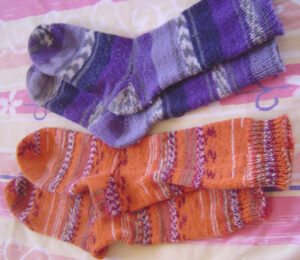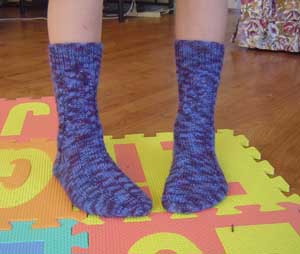The Art of Sock Knitting
 Sock knitting is a rewarding and practical craft that blends creativity with functionality. Unlike larger projects such as sweaters or blankets, socks are small, portable, and offer a relatively quick turnaround. They also make thoughtful, personalized gifts and are a great way to explore different knitting techniques in a compact form.
Sock knitting is a rewarding and practical craft that blends creativity with functionality. Unlike larger projects such as sweaters or blankets, socks are small, portable, and offer a relatively quick turnaround. They also make thoughtful, personalized gifts and are a great way to explore different knitting techniques in a compact form.
Why Knit Socks?
Knitting socks allows for a custom fit, superior comfort, and durability compared to store-bought pairs. Handmade socks conform to the shape of the wearer’s foot and can be tailored to specific needs, such as extra warmth for cold climates or breathable designs for year-round wear. Additionally, knitting socks provides an opportunity to experiment with colors, textures, and patterns, making each pair unique.
Essential Materials
To knit socks, you’ll need:
- Yarn – Sock yarn is typically a blend of wool and nylon. Wool provides warmth and moisture-wicking properties, while nylon adds strength and elasticity. Fingering-weight yarn is the most common choice, though some prefer sport or DK weight for thicker socks.
- Needles – Socks can be knit with double-pointed needles (DPNs), circular needles using the magic loop method, or a small circular needle. The choice depends on personal preference.
- Notions – Stitch markers, a tapestry needle for weaving in ends, and a row counter can be helpful for keeping track of progress.
Basic Sock Construction
A sock consists of several key sections:
- Cuff – The top of the sock, usually worked in ribbing (e.g., k1, p1 or k2, p2) for elasticity.
- Leg – The portion between the cuff and the heel, which can be patterned or plain.
- Heel – A reinforced area that provides durability and fit. Common heel styles include the heel flap and gusset, short-row heel, and afterthought heel.
- Foot – The main body of the sock, which is usually knit in stockinette stitch for a smooth, comfortable feel.
- Toe – Decreases shape the toe, which is then closed using the Kitchener stitch for a seamless finish.
Techniques to Know
- Casting On – A stretchy cast-on, such as the long-tail or German twisted cast-on, ensures comfort at the cuff.
- Knitting in the Round – Most socks are knit in the round to create a seamless tube.
- Shaping – Heel turns and toe decreases require attention to shaping methods to ensure a good fit.
- Binding Off (or Casting Off) – A stretchy bind-off, if knitting toe-up socks, is essential for comfortable wear.
Getting Started
Beginners may want to start with a simple pattern using worsted-weight yarn for faster results. As skills improve, finer yarns and intricate stitch patterns can be introduced. Knitting socks is a gratifying way to build knitting expertise while creating something practical and beautiful. With patience and practice, anyone can master the art of sock knitting!



